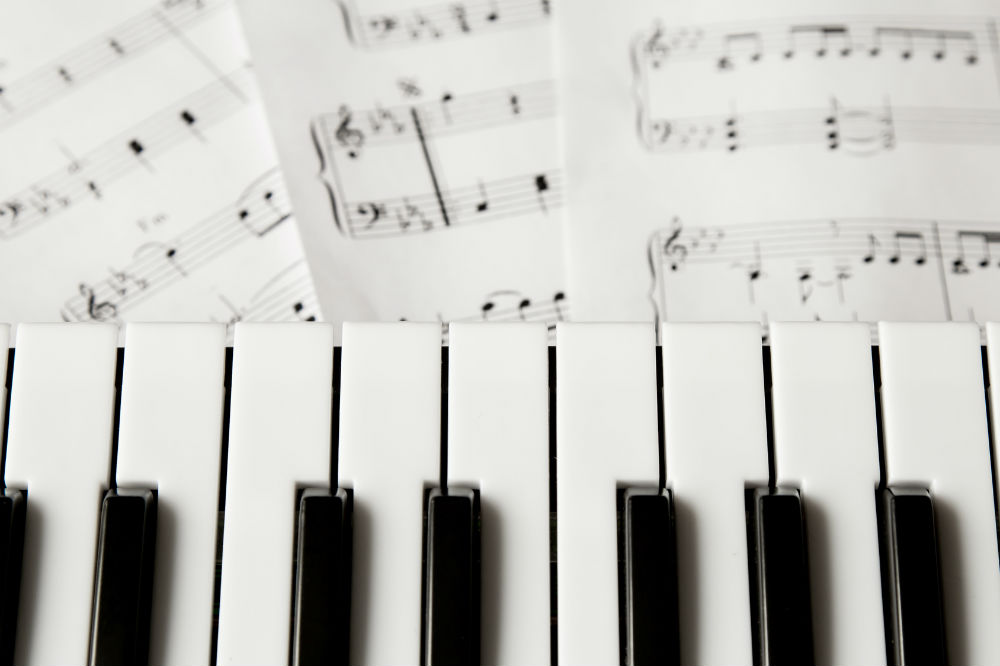
When you are learning to play a keyboard instrument- whether it’s an 88-key grand piano, an organ, or a MIDI controller, the first step is to learn the notes on the keyboard. In this article, you will learn how the keys are arranged and the notes that correspond with them. Then, you will be well on your way to learning music.
Keys on All Keyboards
Determine the repeating pattern of the piano keys
First of all, you’ll need to find “C” on your keyboard- this is the first note of the “C major” scale- it goes like this C-D-E-F-G-A-B-C. Pay close attention to the pattern of the white keys: there are 3 white keys enclosing 2 black keys and 4 white keys enclosing 3 black keys.
You can remember it this way: the black keys have a 5-key pattern repeat- first 2 black keys with 1 white key between, then 2 white keys and three black keys with one white key between each, and finally 2 black keys.
You will find that no matter what keyboard you’re looking at, this pattern is consistent. Each note is represented in a 12-note octave- the difference is the pitch.
Learn the Black Keys
Now, you are going to learn the black keys. Each one has 2 possible names. For example, you’ll find C# (C-sharp) and D♭ (D-flat). What you call it depends upon the key you’re in and the chord you’re playing. Following are names for the notes on the black keys:
- 1st: C# or D♭
- 2nd: D# or E♭
- 3rd: F# or G♭
- 4th: G# or A♭
- 5th: A# or B♭
Take note that when you are trying to determine the note of a black key, you look at the white one immediately before it and add a sharp sign, or the white key immediately after it and add a flat sign.
Determine the octave the notes are in.
In order to do this, you’ll need to locate middle C. This note is found in the 4th octave. Then, you will go up/down to find the octave that a key is in, increasing or decreasing the number as you go- depending on which way you’re going.
Learn what the notes look like on paper.
Next, you must learn what notes look like on written music. This will be beneficial for helping you understand the relationship of the notes.
Keys on Pianos & 88-Key Keyboards
Learn the white keys.
Start with 1st key to the left. The lowest playable note is the very first key on the left-hand side. The name of this key is A0, or A-zeroth octave.
Now, you will progress to the right (up) the keyboard, pressing only the white keys. The keys you will find are as follows:
A0 (far left/lowest)- B0- C1
Then, you will follow the pattern- it repeats for the rest of the white keys, starting with the 3rd white one. The pattern is as follows:
- 3rd: C1
- 4th: D1
- 5th: E1
- 6th: F1
- 7th: G1
- 8th: A1
- 9th: B1
- 10th: C2
Take note that once you reach B1, the pattern repeats for the next octave. The same pattern will continue through the keyboard to C2- then to C3- then to C4, until you’ve reached the end.
Learn the black keys.
Once you have learned the white keys, you’ll take the time to learn the black keys. You will start with the lowest black note on the keyboard (far left)- the first one is A#0 or B♭0. A sharp is indicated by # and a flat is indicated by ♭.
Just as you did with the white keys, you’ll move to the right- that is up- the keyboard, you’ll find a group of 5 black keys immediately following the first black one. These keys are as follows:
- 2nd: C#1/D♭1
- 3rd: D#1/E♭1
- 4th: F#1/G♭1
- 5th: G#1/A♭1
- 6th: A#1 or B♭1
Just as you learned with the white keys, the same pattern continues up the keyboard for the black keys.
No matter which keyboard based instrument you’re trying to learn, the very first step is to take the time to learn piano notes. The keys are arranged basically the same on every keyed instrument.
Taking the time to learn the way the keys are arranged and the notes that go with them will help you be on your way to learning music.


